 Your new post is loading...
 Your new post is loading...

|
Scooped by
Gust MEES
|

|
Scooped by
Gust MEES
|
Teacher expertise.
Why? Here are a few reasons from the researchers on why teacher expertise in education policy (development, implementation, reflection, etc.) is important:
- Reform can be problematic if teachers do not have a voice in education policy changes and the policy agenda (Wells, 2012; Bangs & Frost, 2012).
- Teacher voice and teacher leadership is vital for the success of reform movements (Little, 1988; Organisation for Economic Co-operation and Development, 2011; Wells, 2012; York-Barr & Duke, 2004).
- There is a chasm between current education policy and what teachers know and experience as practitioners (Bangs & Frost, 2012).
- There is a huge gap between policy and practice in education (Berry et al., 2013).
- We have a history of failed education reforms and policies with very little teacher input, and if there is teacher input, it may not be in meaningful ways. Think “rubber stamp” (Goldstein, 2014; Ravitch, 2011; anyone who looks at the history of education).
Teachers are the experts who will help identify the problem, the root cause of the problem, and the possible policy solution(s). So the checklist? It’s a great start. But I have a to ask a question that could make it even stronger. In the words of Goldstein (2013), “Why are the best players in the game of education reform sitting on the bench?”

|
Scooped by
Gust MEES
|

|
Scooped by
Gust MEES
|
Teachers lead learning in their classrooms every day, but teacher leadership often extends beyond the classroom. Teachers lead their colleagues in professional learning and growth. They lead their communities in bringing change to schools. They might focus on leading within their schools and localities, or they might use social media to share their ideas with fellow educators around the world. But such leadership can be a challenge.
Administrators and policymakers need to listen to teacher voices and give teachers room to lead. This issue of Educational Leadership looks at how teachers are leading today and considers how schools can best leverage the leadership skills of teachers.
Learn more:
- http://www.scoop.it/t/21st-century-learning-and-teaching/?tag=LeaderShip

|
Scooped by
Gust MEES
|

|
Scooped by
Gust MEES
|

|
Scooped by
Gust MEES
|

|
Scooped by
Gust MEES
|
Coaching is a difference-maker in education. Think of the mindset evident in high-performing athletic teams, chess teams, even actors and other entertainers. Content providers are valuable, but that is not what makes learning organizations distinct, especially not those that seek to reach and provide a high-quality education to a full spectrum of learners. . The same thing is true as we continue to implement things like competency-based education models. Many celebrate the way CBE can reduce the cost of college degrees, increasing access and opportunity, and addressing critical workforce needs. However, if cost reduction happens at the expense of great coaching and mentoring, I am concerned that we will make little progress in the democratization of education. . The “haves and have nots” of education depend largely upon the prerequisite skills needed to take advantage of newer and emerging learning environments ranging from CBE to MOOCs, self-directed learning to self-organized learning environments....
Learn more:
- https://gustmees.wordpress.com/2014/07/10/education-collaboration-and-coaching-the-future/
- http://www.scoop.it/t/21st-century-learning-and-teaching/?tag=Coaching

|
Scooped by
Gust MEES
|
Successful leaders know that they must get out of their comfort zone to succeed. Great leaders from history are those who have spent a large amount of their time outside their comfort zone. . Leaders who take risks and step into their learning zone are those that succeed. It’s only when you can give up what’s safe and familiar that you create opportunities and develop new capabilities. As you do, you expand your influence and gain the skills required to take on bigger and bigger challenges. . In this sense, leaders are self-made and not born, they are developed, not promoted. Leadership is a learned skill that is developed as you step out of your comfort zone. . Learn more: . - http://www.scoop.it/t/21st-century-learning-and-teaching/?tag=LeaderShip
Via Patti Kinney, Gust MEES

|
Scooped by
Gust MEES
|
|

|
Scooped by
Gust MEES
|
WHICH Strategy could WE use for professional eLeadership and eSkills!? Well, giving pedagogical and andragocical (Adult Learning) courses since 2002 and being a Life-Long Learning person and interested (and experienced...) in resolving problems and finding NEW ways for BETTER Learning, here below my thoughts, ideas and strategy for a professional approach for #eLeadership…

|
Scooped by
Gust MEES
|
- Be the thing you teach.
- Be the expert of your classroom.
- Be data savvy.
- Be continually reflective on your practice.
- Be able to defend your practice.
This directive is similar to the data-savvy and expert points, but teacher leaders need to be able to explain their craft. Your administrator will be trotting all kinds of people through your classroom. As a teacher leader, you might be a maverick, doing things a little differently than the rest of the herd. Be prepared to defend that road less traveled. Know why you do the things you do. Then, as a leader, share everything you know. - Be informed about local, state, national education policy.
- Be positive and solutions-oriented.
- Rise above the turbulence.
Learn more:
Innovation is everyone's great desire. We worship innovation. Entrepreneurs embrace it. Careers are made on it. Companies compete over it. The challenge is we may not all be talking about the same thing.
The innovator's mindset embraces these ten strategies I have found in my research:
1. Bring value and meaning that is clearly unique.
2. Create a culture of inventing that others can build on.
3. Move with velocity to embrace the new.
4. Have the courage to create.
5. Disrupt yourself before others do.
6. If you don't have passion about an idea, don't do it.
7. Change something to make it better, bring the value.
8. Monetizing innovation is called success.
9. People do the innovating.
10. Decide what mountain top you want to own, then go for it.
Learn more:
https://gustmees.wordpress.com/2015/07/19/learning-path-for-professional-21st-century-learning-by-ict-practice/
Via Dan Kirsch

|
Scooped by
Gust MEES
|
So what does tomorrow’s leader look like? Here are four traits on the rise: - Part of the team. For a millennial workforce, working collaboratively is key – and that includes the chance to challenge and question the boss. Great leaders will spend time meeting their staff and really listening to what they have to say.
- Admitting mistakes. Authenticity rules, and that might mean having the courage and conviction to admit lack of knowledge or making the wrong call. Humility is critical, particularly in an age of transparency and public accountability.
- Multi-sector experience. Millennials are far more likely to move between jobs and sectors as they develop their career, and they’ll expect their leaders to have the same breadth of experience. The journey from shop floor to CEO isn’t as relevant for tomorrow’s workforce.
- Female characteristics. It’s still a shocking truth that 5% of Fortune 500 positions go to women, but the evidence shows that businesses benefit enormously from behavioural traits often considered to be female, such as emotional intelligence, diplomacy and complex social skills. Women make great leaders.

|
Scooped by
Gust MEES
|
No one ever became a great leader without first becoming a great communicator.
Great leaders connect with people on an emotional level every time they speak. Their words inspire others to achieve more than they ever thought possible.
Great communicators are intentional about it, and there are 10 secrets they rely on to deliver a powerful message. Put these secrets to work in your communication and watch your influence soar.
1. They Know Their Audience
2. They Are Experts In Body Language
3. They Are Honest
4. They Are Authentic
5. They Speak With Authority
6. They Speak To Groups As Individuals
7. They Have Ears (And They Use Them)
8. They Use Phrases Like "It's My Fault," "I Was Wrong," and "I'm Sorry"
9. They Solicit Feedback
10. They're Proactive
Leaders with the best communication skills don't waste time playing catch-up. They're quick to head off the rumor mill by sharing bad news in a timely manner. They also give clear, concise goals and directions so people don't waste their time heading in the wrong direction.
Learn more:
- http://www.scoop.it/t/21st-century-learning-and-teaching/?tag=LeaderShip

|
Scooped by
Gust MEES
|

|
Scooped by
Gust MEES
|
Enter the Teacherpreneur
The teacherpreneur merges the image of the innovative classroom teacher with the risk-taking and entrepreneurial leadership that we commonly associate with those who create their own place in the professional world.
Teacherpreneurs are, first and foremost, imaginative teachers. They have created a classroom culture of creativity and reflection. They think beyond the classroom in terms of how to make lessons meaningful, and in so doing, might see a need elsewhere in school that their innovation can address.
As a result, they might request to go part-time in the classroom in order to use their other untapped skills to meet that need. The district or school itself might fund this "other part" of their job, or it might be funded through grants or other outside agencies. For instance, in California, we have noticeable influx of recent funds from the Local Control and Accountability Plan (LCAP).
As a result, many districts are spending a percentage of that money on creating teacherpreneur positions.
The key here is that the teacher creates a different way of navigating the profession without leaving that profession entirely. Their talents remain in the classroom and on the school site, but they've had the opportunity to shake their dice, try something new, and use their skills in a different way.
It comes down to differentiation. We differentiate our students, but we rarely talk about the need to differentiate our teachers, too. It isn't about one teacher being "better" or "worse" than others on a site. It's about admitting that staff can't be standardized and that the individuals running the classroom might have some strengths that should also be leveraged to improve the school and district culture overall.
Barnett Berry: Teacherpreneurs are classroom experts who teach students regularly, but also have time, space, and reward to incubate and execute their own ideas -- just like entrepreneurs!
Teacherpreneurs are amongst us, and they are, just perhaps, signaling in a new kind of educational system.
Learn more:
- https://gustmees.files.wordpress.com/2015/05/document_fusionne.pdf
- https://gustmees.wordpress.com/2015/05/26/what-are-the-skills-needed-from-students-in-the-future/
- https://gustmees.wordpress.com/2015/03/04/learning-to-learn-preparation-for-better-learning-how-to/

|
Scooped by
Gust MEES
|
Until now, there have been a variety of tools for managers who wish to measure the emotional cues of individuals, such as the Brief Affect Recognition Test to understand cross-cultural facial expressions. Facial expressions provide a wealth of reliable information about how others are making sense of the world around them, and allow us to tailor our responses to the individual in a one-on-one situation.
This represents one of the key measures of emotional intelligence, which evaluates how well individuals perceive and deal with affectively charged interpersonal situations.
Read more at http://knowledge.insead.edu/strategy/leaders-who-can-read-collective-emotions-are-more-effective-4002#VsZzWHkFKKeIo3ac.99But there are situations in which leaders have to deal with the emotions of large groups of people, not just those of one or a few individuals and most managers don’t have time to operate on a one-on-one basis all the time. Understanding the collective can help leaders respond effectively to the group as a whole. This happens in situations such as dealing with the collective anxiety of executives facing the news of corporate restructuring; or public authorities dealing with the collective anger of large groups of people in the streets; or politicians seeking to inspire large groups of people to win an election. Those with the skill to pick up on the subtle emotional cues of the collective can adapt accordingly and, according to our research, earn more respect as a result. So how can this ability to see the forest for the trees be applied by leaders?
Learn more:
- http://www.scoop.it/t/21st-century-learning-and-teaching/?tag=Empathy
- http://www.scoop.it/t/21st-century-learning-and-teaching/?tag=Daniel+Goleman
- http://www.scoop.it/t/21st-century-learning-and-teaching/?tag=EQ
Via Mark E. Deschaine, PhD

|
Rescooped by
Gust MEES
from Leadership
|
Many people are tempted to believe that true leaders are born not made, but when it comes to leaders of historical importance, that adage rarely seems true . The best leaders are those whose toughest critics still think highly of their person and character. Being a person who is likeable requires that a person practice honesty and justice in all matters, even when those matters are unpleasant or cost him personally. . Great leaders are made, not born, and if you hope to be one someday, practice these six traits. . Learn more: . - http://www.scoop.it/t/21st-century-learning-and-teaching/?tag=LeaderShip
Via Anne Leong

|
Scooped by
Gust MEES
|
The responsibility of a leader is to lead. (What a concept.) The fact is, some leaders are causing irreparable damage to great institutions by shirking their responsibilities. They’re afraid to address difficult issues, make tough decisions, and introduce the change that’s required to achieve long-term success. Instead, these “counterfeit leaders” spend much of their time playing politics, protecting their turf, and promoting their self-interests. To make matters worse, counterfeit leaders, in both public and private sectors, often masquerade as positive role models while condoning unethical or irresponsible behavior that undermines the very foundation of their institution.
With full complicity, we reward these misguided efforts by electing politicians for “life” and by paying executives zillions of dollars to damage the same organizations that they “swear” to serve. And just to show there are no hard feelings when things do go irreparably wrong, we offer many of our “finest” golden parachutes to make sure they have a soft landing into their next misadventure.
How do you spot a counterfeit leader? Here are some ways to evaluate our leaders:
Real leaders achieve success by setting the bar high, encouraging teamwork, promoting win-win relationships, and demanding everyone’s best effort. Real leaders win the support of their constituents by earning their trust and respect. This is achieved through powerful ideas, personal expertise, and impeccable integrity rather than through their position or by “pulling rank.”
Learn more:
- http://www.scoop.it/t/21st-century-learning-and-teaching/?tag=Frank+SONNENBERG
|



 Your new post is loading...
Your new post is loading...














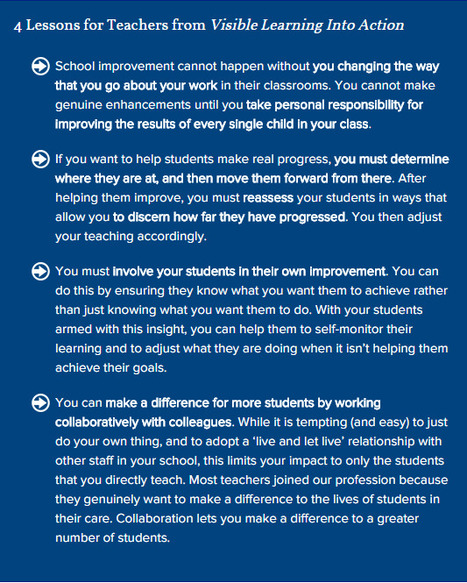

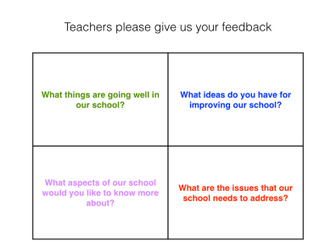
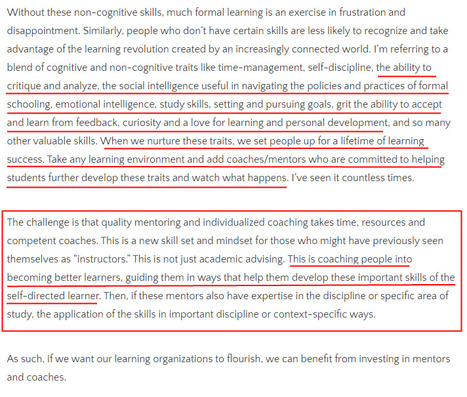


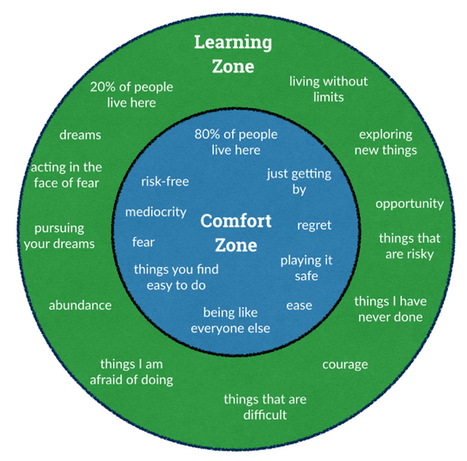



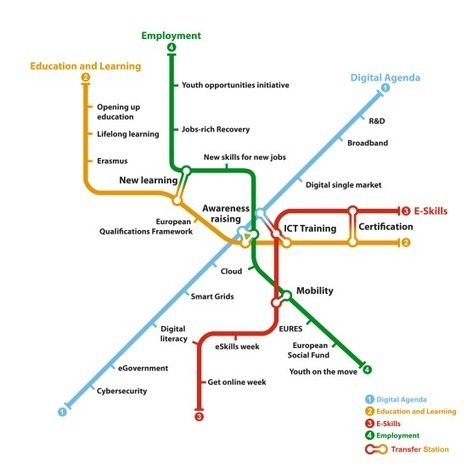



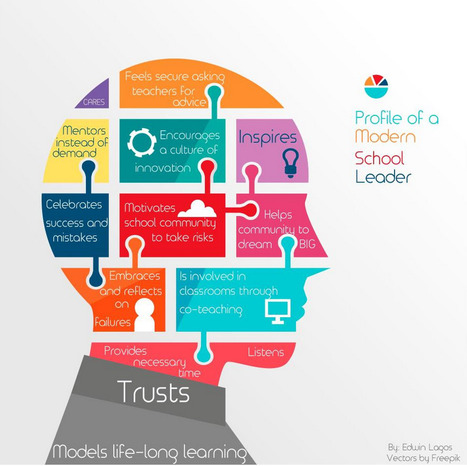

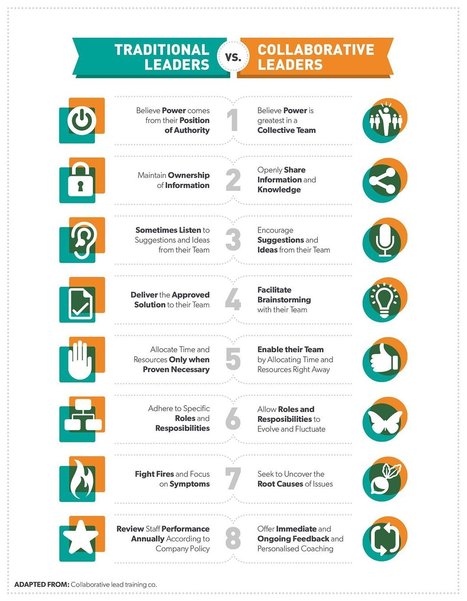





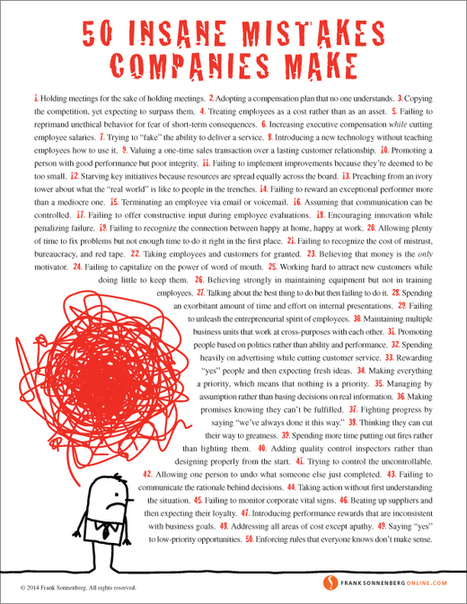







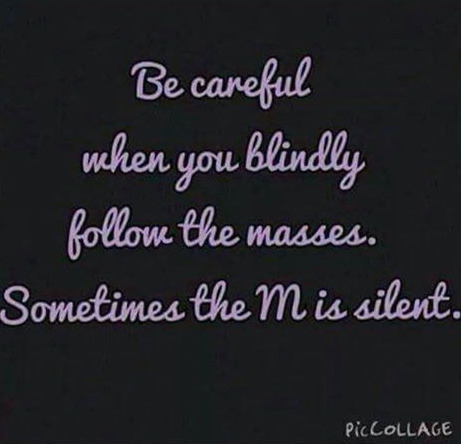







Learn more / En savoir plus / Mehr erfahren:
https://gustmees.wordpress.com/2016/07/03/reflections-on-a-professional-strategy-for-eskills-eleadership/
https://gustmees.wordpress.com/2016/05/19/a-holistic-view-of-what-will-influence-education-in-the-future/
https://gustmees.wordpress.com/2016/02/18/the-new-possibilities-to-learn-and-teach-with-ict/
https://gustmees.wordpress.com/2015/12/19/teaching-was-yesterday-today-is-coaching-the-learners-students-for-learning-to-learn/
https://gustmees.wordpress.com/2015/07/19/learning-path-for-professional-21st-century-learning-by-ict-practice/
http://www.scoop.it/t/21st-century-learning-and-teaching/?tag=LeaderShip